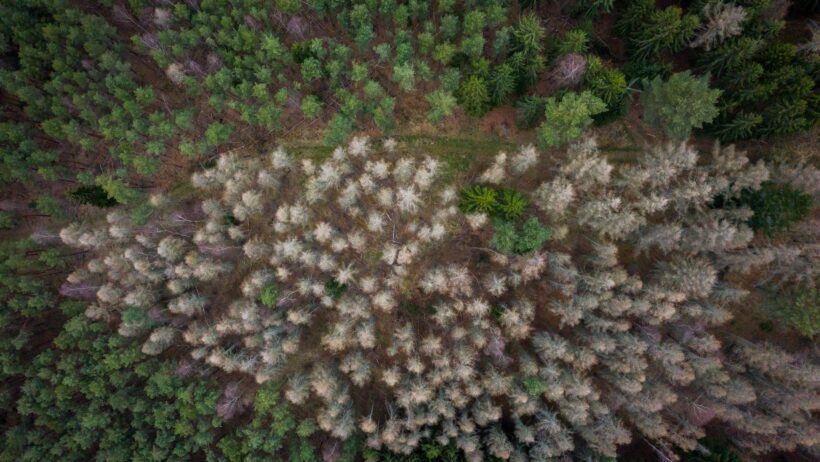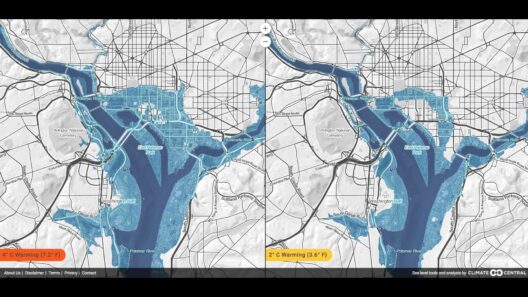In the intricate tapestry of the Earth’s ecosystems, forests function as the lungs of our planet. They are vast networks of life, teeming with biodiversity, providing habitats, and playing a crucial role in climate regulation. Yet, the act of tree cutting casts a long shadow over this delicate balance, raising critical questions: Does tree cutting accelerate global warming? What happens when forests fall? The answers to these inquiries unveil a cascade of ecological ramifications that extend far beyond the saw blade.
When one contemplates deforestation, an immediate awareness may surface: trees sequester carbon dioxide (CO2), a prominent greenhouse gas. Tree cutting, therefore, results not only in the physical removal of trees but also in the release of stored carbon back into the atmosphere, exacerbating global warming. When forests are felled, the stored carbon is emitted through various means, including combustion and decay, contributing significantly to the greenhouse gas concentrations that trap heat in our atmosphere.
Forests are not just passive bystanders in the climate narrative; they actively regulate the climate. Through the process of photosynthesis, trees absorb CO2 and, in turn, produce oxygen. This natural cycle is a metaphorical dance—a harmonious exchange between flora and climate. Cutting down trees disrupts this rhythm, allowing greenhouse gases to accumulate, akin to a symphony thrown into disarray, where discordant notes overshadow the melody of a balanced ecosystem.
Moreover, the implications of tree cutting extend beyond mere carbon emissions. The act of deforestation alters local climates, leading to shifts in weather patterns. Forests play a pivotal role in maintaining humidity levels and regulating temperatures. The loss of large wooded areas results in reduced evaporation rates and can lead to increased aridity, transforming once lush landscapes into parched, barren land. This change in microclimate is not just detrimental to the flora indigenous to these regions; it precipitates a broader ecological upheaval, threatening wildlife and biodiversity.
Thus, when forests fall, they do not merely disappear; they leave behind a void that is often filled with unforeseen consequences. Soil erosion becomes rampant, as tree roots, which once held the soil together, are no longer present to anchor it. The loss of vegetation exposes the soil to the elements, leading to degradation, sedimentation of waterways, and diminished fertility. This vicious cycle perpetuates itself; as soil quality declines, so too does the capacity for rehabilitation. In this way, deforestation can be viewed as a catalyst for environmental degradation that extends far into the future.
Additionally, the biodiversity housed within these forests faces threats of monumental proportions. Each tree provides sanctuary to countless species, many of which are yet to be studied or understood. When tree cutting occurs, entire ecosystems can collapse, akin to the unraveling of a masterfully woven tapestry. The extinction of species diminishes genetic diversity, leading to weakened resilience against climate change and other environmental pressures. Once lost, these species cannot be replaced; the intricate web of life is irrevocably altered, possibly in ways not yet conceivable.
The economic motivations behind tree cutting further complicate this issue. Many regions depend on logging for their livelihoods, leading to a paradox: while economic growth may temporarily increase, long-term environmental health is sacrificed. Short-term financial gains encourage unsustainable practices that prioritize immediate profit over ecological integrity. This perspective reflects a shortsighted vision, akin to plundering a bank account without considering the long-term impacts on financial stability.
Additionally, the notion of reforestation is often touted as a solution. However, it is essential to approach this concept with caution. While planting trees can contribute positively to carbon sequestration efforts, it is paramount to acknowledge that a young sapling cannot replicate the intricate relationships and contributions of a mature, established forest. Reforestation efforts must be accompanied by strategic planning and a deep understanding of ecological needs. The path towards sustainability requires more than just planting trees; it necessitates preserving existing forests and restoring degraded landscapes in a manner that aligns with native biodiversity.
In addressing the question of tree cutting and its impact on global warming, it becomes apparent that the implications stretch beyond mere carbon footprints. The forests are an intricate web of life, and their disappearance reverberates through every stratum of the ecosystem. The challenge ahead is monumental, requiring collective action, informed policies, and a renewed commitment to sustainability. As stewards of the Earth, it is our collective duty to foster a culture that respects and preserves our natural resources, understanding that the health of our planet is inherently tied to the health of our forests.
As we contemplate the fate of the world’s forests, we are confronted with an imperative: to guard against the specter of deforestation. The path forward involves not merely envisioning a greener world but actively cultivating it—a holistic approach that honors the interconnectedness of our planet’s ecosystems. In doing so, we may yet preserve those lungs of our Earth, ensuring future generations breathe freely, unburdened by the weight of our past missteps.








